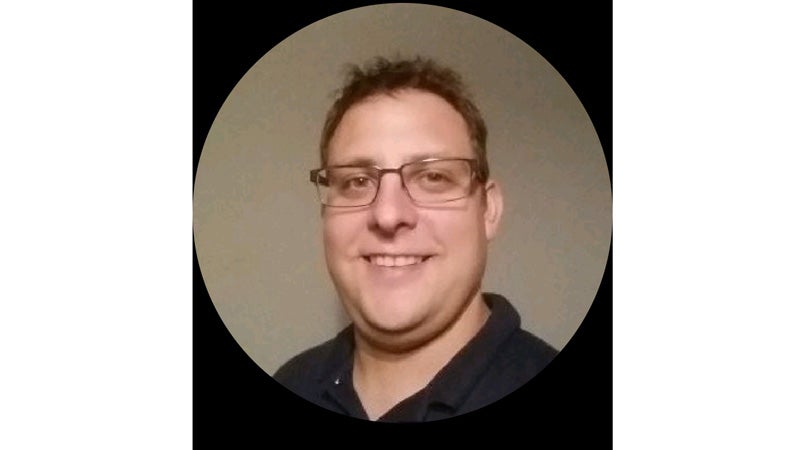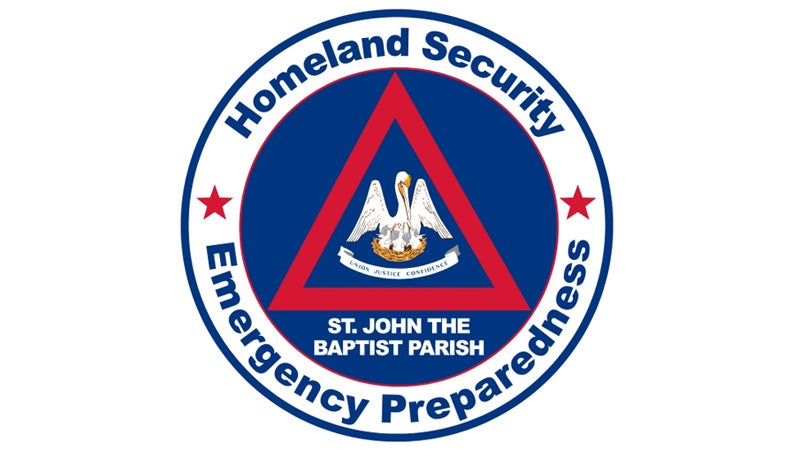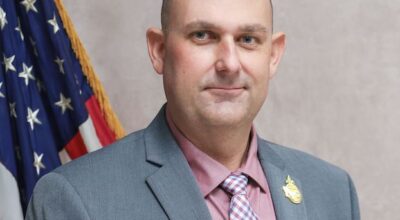Ham radio operator reflects on Hurricane Katrina 15 years later
Published 10:13 am Wednesday, September 2, 2020

- Adam Tamplain has been a volunteer with the St. John Parish Emergency Operations Center for 20 years.
|
Getting your Trinity Audio player ready...
|
LAPLACE — Most ham radio operators have an innate desire to help people impacted by disasters, according to emergency planner Adam Tamplain.
Tamplain, a St. John the Baptist Parish native, became the only link between the state’s Office of Emergency Preparedness and several Southeast Louisiana parishes after Hurricane Katrina ravaged New Orleans 15 years ago.
Tamplain slept overnight in the St. John Emergency Operations Center while cell phones and electricity were down for more than a week. He fielded numerous calls from people stuck on top of their homes in the days that followed the widespread levee failures in New Orleans. The pleas for help were steady, and Tamplain remembers losing count after 60 or 70 rescue calls came through.
Infrastructure and telecommunications have improved substantially in the past 15 years, thanks in part to the lessons learned from hurricanes like Katrina and Isaac. When all else fails, amateur radio specialists are there to provide critical communications in a time of need.
“You have all of these sophisticated multi-million dollar systems out there, but when it comes down to it, there is still a vital need for an individual with his or her own transmitting equipment, independent of network systems and independent of the Internet,” Tamplain said. “It’s point to point, and that’s why it works when everything else fails. There’s no interconnectivity.”
Tamplain gained an interest in ham radio when he was 15 years old. He and his brother were on a fishing trip in Texas when a bout of severe weather came through. Tamplain sat in the hotel lobby during the storm, watching the radar and providing updates on the tornado warning to keep the other guests informed. The hotel receptionist called him over and told him that a lot of the big-time storm followers were radio operators.
When he got back from his trip, Tamplain called David Bernard from Channel Four. Bernard directed him to a local radio club in Jefferson Parish. By July 2000, Tamplain had passed his licensing exam.
“Through the licensing process and classes, I met other ham radio operators, and a lot of them volunteer with emergency management operations. I wanted to do that,” Tamplain said.
He immediately contacted the Emergency Operations Center in St. John Parish and became a volunteer.
In August 2005, Tamplain was a 20-year-old volunteer firefighter. His family evacuated to Texas for Hurricane Katrina but quickly returned home when they received word that St. John Parish had been spared from the brunt of the storm.
“I called the EOC, and everything was fine until the next morning, when the levee broke. I went to the EOC and immediately got to work,” Tamplain said.
Louisiana had a statewide system at the time that allowed every parish to communicate with officials in Baton Rouge. After Hurricane Katrina, the link went down somewhere between St. John Parish and Baton Rouge, cutting off St. John, St. Charles, Jefferson, Orleans, Plaquemines and St. Bernard parishes from emergency communications.
“All of the affected parishes could talk to each other on this 800Mhz system, but nobody could get to Baton Rouge. I was relaying information from the affected parishes to Baton Rouge over ham radio,” Tamplain said.
He will always remember one of the reports from Plaquemines Parish about a severe hazardous material incident resulting from a rail car that had floated away and gotten tied up in high voltage power lines.
Most cell phones and 9-1-1 systems were down as water filtered into the city of New Orleans. As soon as people trapped by the floodwaters found one bar of service, they would immediately dial 9-1-1. Their calls were directed to the nearest operational 9-1-1 center, which just happened to be in St. John Parish.
Local 9-1-1 operators would take information down from the calls and bring Tamplain a sticky note that contained information such as the person’s address, the number of people needing to be rescued and any specific medical needs.
“I would get on ham radio and relay that information to Baton Rouge to put in a rescue request. They would relay that to the Coast Guard, National Guard or whoever could get a helicopter to those buildings to rescue those people,” Tamplain said. “I lost count somewhere around 60 or 70. They came in for two or three days straight. I was at EOC for at least a week. Some other volunteers were also there overnight.”
The world has changed since 2005. Tamplain stayed with the volunteer fire department in Reserve for a little more than 10 years. He works as an emergency planner with Entergy but still remains an active volunteer with the St. John Department of Public Safety. He also assists in auxiliary communications with the state of Louisiana.
Tamplain volunteered in the aftermath of the great 2016 floods. Nothing thus far has compared to his experience after Hurricane Katrina.
“After Katrina, all the emergency management agents and telecommunication companies learned a lot of lessons about redundancy and infrastructure vulnerability and how to signal out of that,” Tamplain said. “Ham radio still played a big role in 2016, but it wasn’t nearly as prolific as what it was in Katrina.”
Tamplain said that while the lessons learned from Katrina strengthened the communications infrastructure, they also strengthened the reliability on ham radio operations.
“When I was there for Katrina, it was one little radio, one little transceiver I was operating on. If you go into our EOC now in St. John, we have a very advanced capability with ham radio,” Tamplain said.




